Art and Sacrifice – Must an Artist Drop Other Interests?
This week, I respond to a question about creative focus: when we want to move forward, should we focus on doing one thing and abandon other creative activities, like crafting?
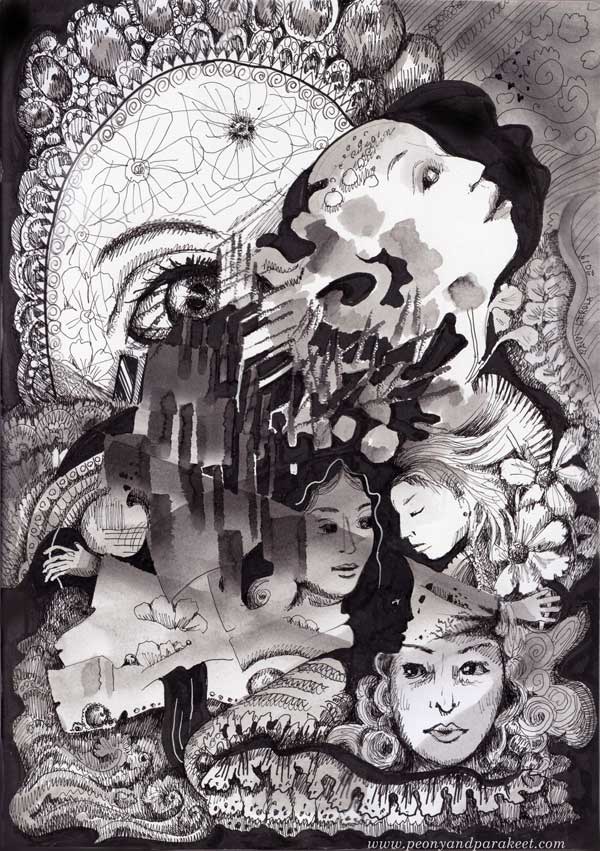
I got the idea for this blog post from an interesting discussion that is running in my community Bloom and Fly.
The discussion started when a member wrote:
“I find that I have an interest in, perhaps, too many creative pursuits. I enjoy sketching, making journals, watercolors, acrylics, crafting, etc. I have observed that artists with a specific focus and dedication seem to be more successful and just plain good at what they do.
Of course, if one focuses on one ability, the hope is a gain in creative skills. Practice for purpose. So, should we know that in order to be very good at something, we must sacrifice other interests? Any thoughts?
I find that I have an interest in, perhaps, too many creative pursuits. I enjoy sketching, making journals, watercolors, acrylics, crafting, etc. I have observed that artists with a specific focus and dedication seem to be more successful and just plain good at what they do. Of course, if one focuses on one ability, the hope is a gain in creative skills. Practice for purpose. So, should we know that in order to be very good at something, we must sacrifice other interests? Any thoughts?“
Here’s my answer!
Sacrificing a Hobby? What’s Your Priority?
When you want to move forward, the essential question about every activity is: “Is this activity for relaxation or for moving forward” so, “Is this hobby or work?”
Having many hobbies is a good thing. I am a professional artist, and I love my many hobbies. For example, I quilt, scrapbook, make cards, spin yarn, knit, and cross stitch. I don’t do everything every week, but I do these regularly in my spare time, mainly in the late evenings and weekends. If I learn new things in my hobbies, it’s nice, but it’s not why I do them. I do them for relaxation, to keep the balance in life, and to stay healthy.
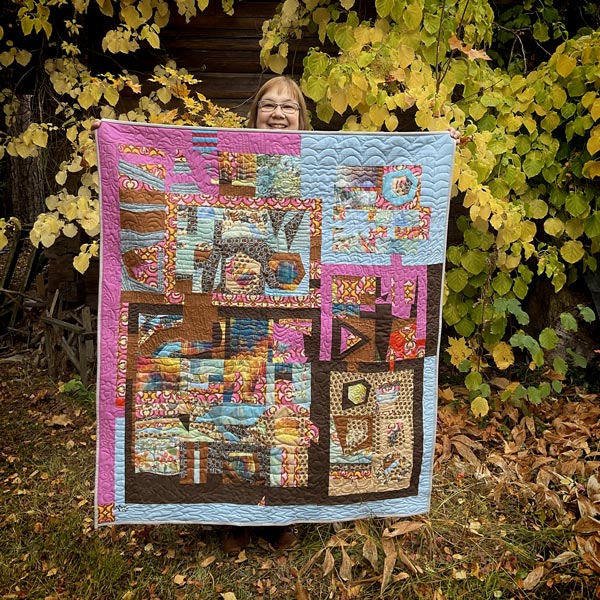
My official Instagram account is @peonyandparakeet, and there, I only share art-related stuff.
Separating your hobbies from your work is essential when you want to see your artistry more clearer.
I also have two beagles that need quite a lot of exercise and lots of house plants that need care. Like my other hobbies, they have never been things that I would sacrifice to become a better artist. I would find it very difficult to lead a happy life focused on art-making only.
But when you want to move forward in visual art, you need to redefine creativity and art.
For many people, a simple quilt is a work of art, a sign of creativity. I get that. But when you want to move forward in art, you need to raise the bar and stop treating every activity as if it would require creativity.
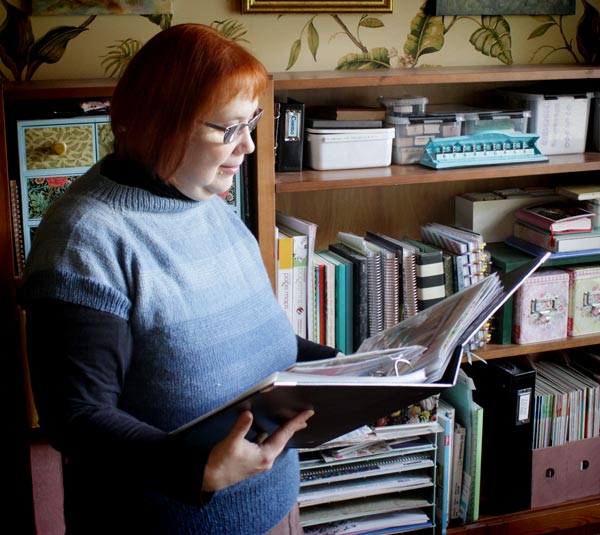
For example, if you don’t want to become a professional scrapbooker, decide that scrapbooking is not a creative activity for you. Yes, you learn self-expression and design from it, but treat it as a side bonus and define the meaning of the hobby differently. For example, I scrapbook because I want to get reminded of the good things that happen in real life – that everything is not about my imagination, but real life matters too. I want to take photos and get an outside view of my life. My paper crafting happens in a different space than art-making and with a different set of tools.
I don’t publish my paper crafting projects alongside my art. Sharing my art is work, and paper crafting is a hobby that’s reserved just for me. When I shop for crafting products, I am a consumer who enjoys buying pretty stuff. When I shop for art supplies, it’s much more serious. I check the pigments and the other quality factors and don’t feel like a shopper at all.
The results of my hobbies are not brilliant, but I reserve my critical eye for my art. If I someday do not enjoy the hobby, I just stop and do something else. That’s ok because it’s not my work.
Where Does Your Best Energy Go?
I save my best energy for creating art. It’s my priority and my work.
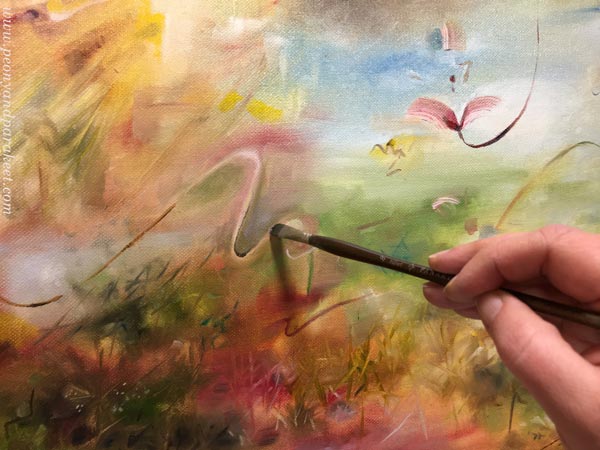
Many days are difficult, but that’s ok. I don’t expect to enjoy every moment. Even if I sometimes fiercely hate what I do, I will continue because, in the long run, it enables things that I want to accomplish in life.
Of course, like in every job, changes are needed if every single day is agony. But in general, I don’t expect things to go easily and effortlessly. I show up every weekday and create productions, not just single projects. Productions are, for example, a series of paintings that I will be exhibiting or a course that I will be launching. I try to think about my work as a series of things, not just single things that I throw to the world. I commit from three months to one year and don’t expect results immediately.
Series is always a big risk. Many classes have not sold as I expected them to, but some have been surprisingly successful. The same has happened with paintings. But the more I think of my work as a continuum or a curated collection, the more potential impact there is.
That’s also why I want to encourage you to make art journals, make a series of drawings to fill boxes of joy, and even take classes to commit to several projects.
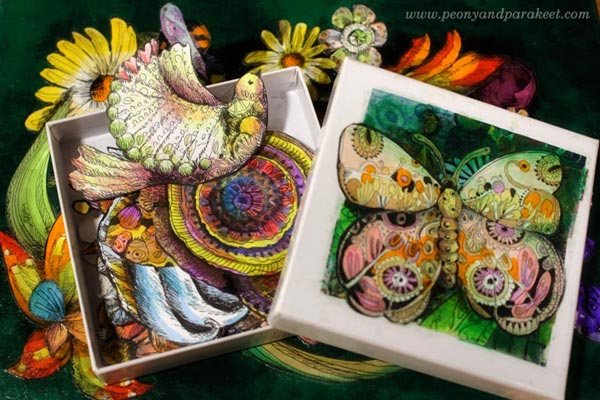
Sacrificing Techniques: Drawing or Painting, Watercolors or Acrylics?
When you want to move forward in art, the most important question is not about the technique. It’s more important to consider what things you want to offer the world. If you think about this blog, would you really want me to focus on one technique, one theme, or one subject? And still, I have a clear focus that defines my offerings: I want people to get connected with their imagination.
Thus, when I fill my journals, it doesn’t make me feel less artist than if I make big oil paintings. My intention is the same – to inspire you to reach that inner child and use your imagination. Journal pages get published in my blog or classes and encourage you to create and imagine, and when someone buys a painting, it takes his or her mind from the wall to a different world.
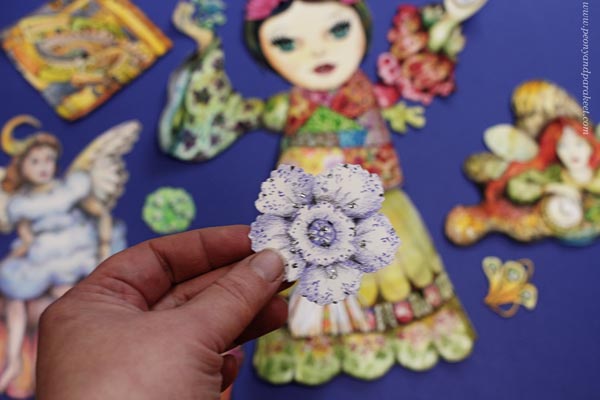
In the work-oriented mindset, you don’t just create for yourself but build a path to serve others. This path can, of course, begin from your own enjoyment, but the longer you want to go, the more it will also involve others.
When you see artists focusing on what they do, remember that they are mindful of how they serve you. Their life can include all kinds of things and activities; they just don’t show that to you. You don’t need to sacrifice your other hobbies; you only need to stop thinking of art as something that you do only for yourself.
This, however, doesn’t mean that you would do art only for the sake of pleasing others. When you are at the beginning of an artist’s journey, you are not conscious of how you can serve people the best way yet. You need to create more art, grow your skills, listen to yourself, and regularly show up to the world. I have found my path by updating this blog, which is now over 10 years old. So I thank you for helping me find my mission as an artist!
“Great, But I Don’t Want Art to Be Work for Me!”
Of course, we can have goals in our hobbies too, and many times the development begins as a hobby. But isn’t it so that when we set goals, they include secret dreams? Being aware of these hidden thoughts and facing how much work it will require is a part of the artist’s journey. And yes, some sacrifice is then needed.
If I think about myself, becoming an artist has required more passion and work than I thought. For example, getting over rejections has been hard but necessary. When everyone said “no,” it was difficult to see the potential “yes” in my work.
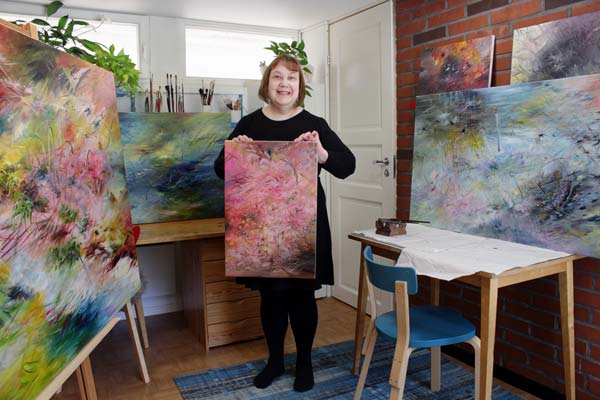
But life is short, and this is what I have ever wanted to accomplish in this life. And now, I even see a new horizon and want to accomplish more. Again, it feels overwhelming, but I know that if I treat it as work – as my priority, I will have a chance. I will write more about that in the near future!
Art and Sacrifice – What Do You Hope to Accomplish?
This is my counter question to the original one. What does being successful in art mean to you?
I also like this question: “How does success appear in your environment?” It’s like a mini question that leads to the big one. For example, imagine how your home looks when you have accomplished what you hope to do. How have you organized the supplies? What’s on your walls? What is the overall style and atmosphere? Even – where do you live then?
Any thoughts? Please leave a comment!
Learning from Artistic Influences – Answering a Question
This week, I have a letter for you who want more from your art. Success looks different in different stages, but wherever you are in the artist’s journey, intuition says that moving forward will be tedious. So, it’s tempting to find a shortcut.
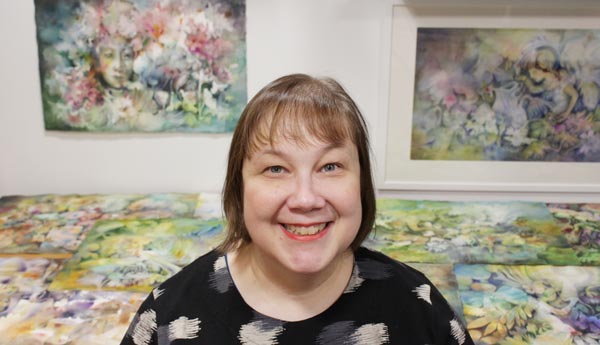
Last week, I got a message from a reader asking if I could recommend one or two artists that have influenced your work. “Who, in your opinion, is someone a new artist must learn about?” she wrote.
Here’s my answer to the message with some additional explanations and images.
Listing Artistic Influences
There are a lot of things that have influenced my work, starting from the slow and long summer days as a child in Nothern Karelia, browsing art history books in a local library, studying computer engineering and learning conceptual thinking, studying industrial design and learning the basics of visual communication through shapes, reading Paul Klee’s Pedagogical Sketchbook, learning old master techniques first in a couple of courses, then on my own, etc.
Two artists that I have admired in the past few years have been Peter Paul Rubens, a Baroque painter, and Wassily Kandinsky, an abstract art pioneer.
(These artists have inspired me to teach as well. In the last section of Floral Fantasies, you learn old master’s techniques, and in Floral Freedom, you learn abstract art through Kandinsky’s and Klee’s ideas.)
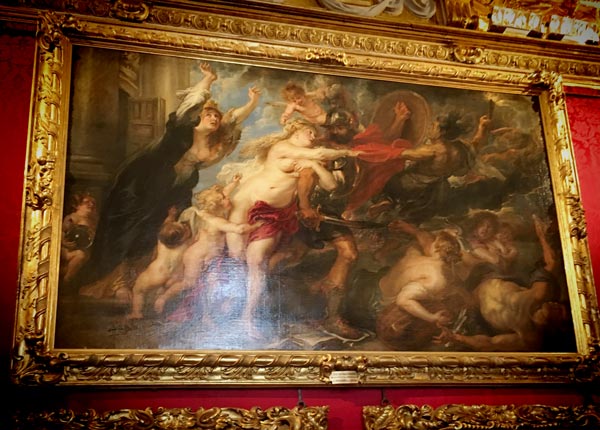
Read more about my visit to Palazzo Pitti in 2017!
However, these may not be the answers you want to hear. The answer that is most beneficial for you is to ask yourself what’s the root reason for the question.
Questioning Your Direction
When I was searching for an answer to that question about ten years ago, I wanted to find a direction that would take me to the art world. I knew my skills weren’t spectacular, so I wanted to find someone successful who creates art that is simple enough. But then I realized that my taste was a way further, and the only admiration I had for those artists was in their courage to come up and the success as far as I was then able to define it.
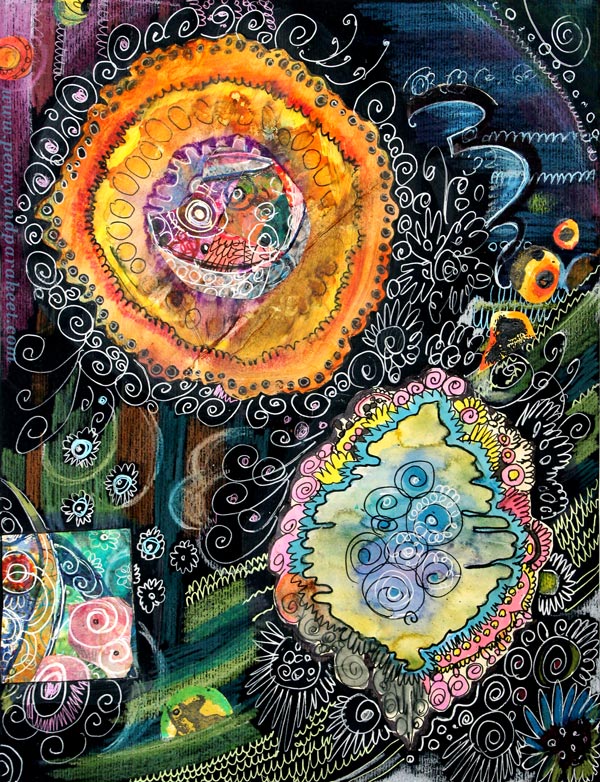
I believe in intuition, and based on that, I assume that you are at the intersection, wondering whether to start going further forward: becoming braver to share your work, build stronger technical skills, and move to the next level in what influences your art and how.
In the next level, the answers become more complicated and multi-faceted. You should learn more about art history and all kinds of contemporary art, go to art museums and galleries, and stop to think not only on the level of “I like that red” but on a more conceptual level: “what does that red represent and how could that effect be created in other ways too?”
Expanding Knowledge and Inspiration for Art
As an artist, you belong to the chain of creative generations, and your roots are long and broad.
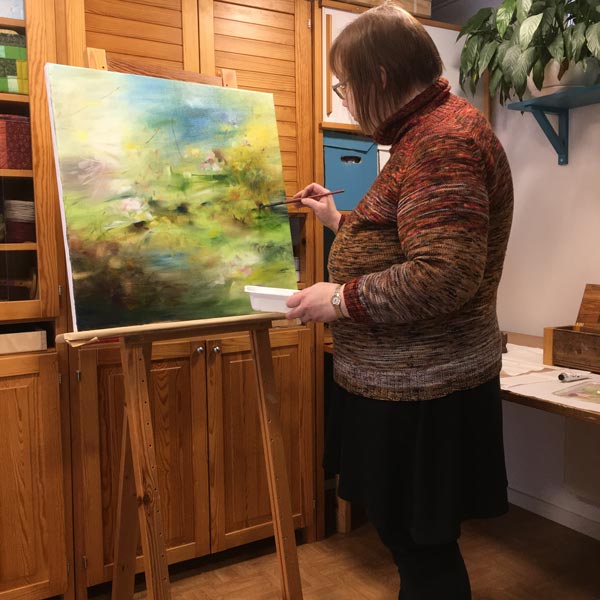
You might also be in a spot where you need to start looking for inspiration outside art, expand into designing, illustration, architecture, and further: nature, culture, and whatever fields are close to you. Art happens when things collide. The nature of art is to expand, not narrow down.
My letter ends here, but how would you have answered the question? Leave a comment!
In the Mood of Albert Edelfelt
This week, I present you a Finnish artist Albert Edelfelt and talk about my upcoming exhibition.
This month, Albert Edelfeltin säätiö – Albert Edelfelt’s foundation contacted me. They invited me to participate in a group exhibition in their villa starting in August. I went to sign the contract this week.
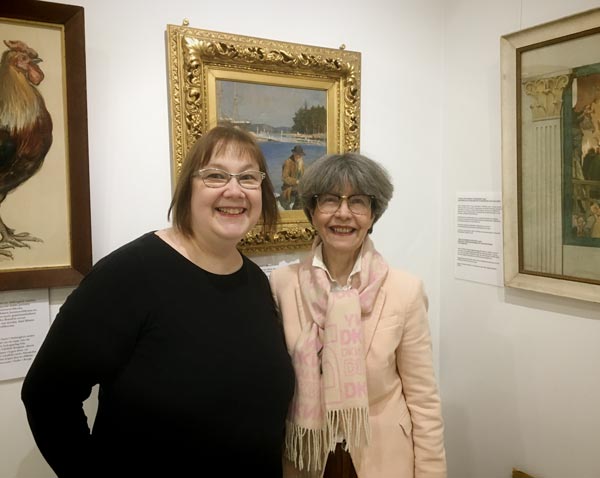
This is very happy news! If you have read my blog for some time, you know I love art history. Even if I follow contemporary art actively, old paintings inspire me more. Many of the techniques that I use for my paintings are old, even if the expression is abstract or half-abstract. So, one of my secret dreams has been to display my paintings with historical ones.
Albert Edelfelt
Albert Edelfelt (1854 – 1905) was one of the most famous Finnish painters. He painted portraits and landscapes and, in my opinion, was exceptionally skillful in sceneries that had a group of people. He also made illustrations, studied and worked in Paris, and lived in Haikko, Finland, where his foundation is also located.
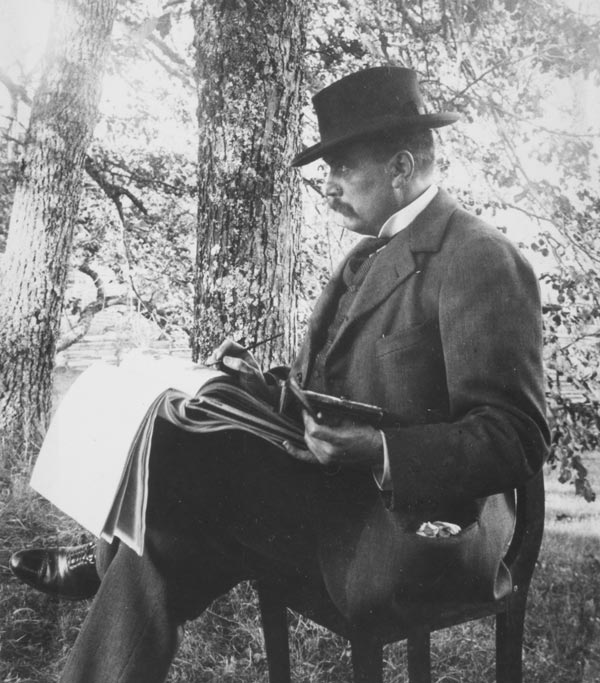
Here’s a better picture of the painting “Onkiva ukko” – a guy fishing – that you can see in the background of the first photo, taken in Villa Albert of Albert Edelfelt’s foundation.
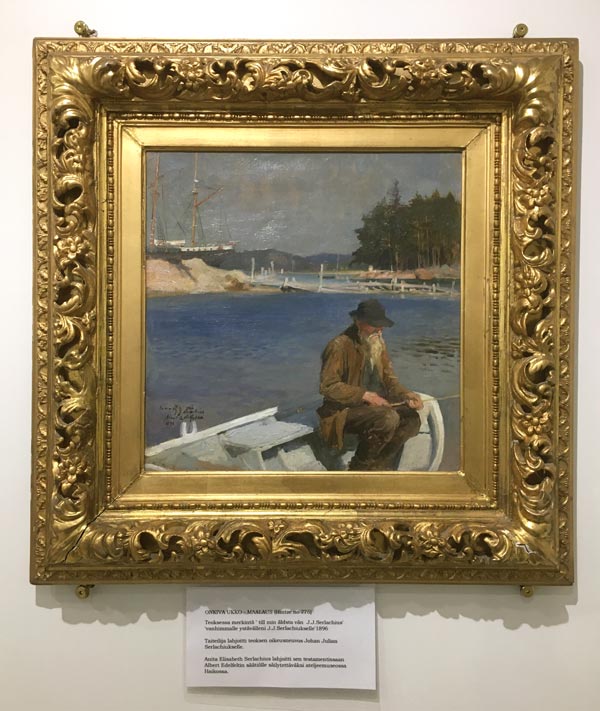
One of Albert Edelfelts most famous paintings, especially in France, is the portrait of Louis Pasteur. And many of his female portraits are so romantic, look at this one, for example!
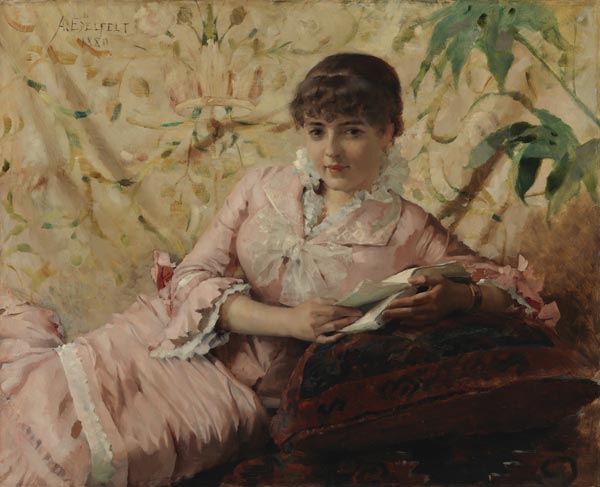
And look how careless the strokes are here, still expressing the essential so skillfully!
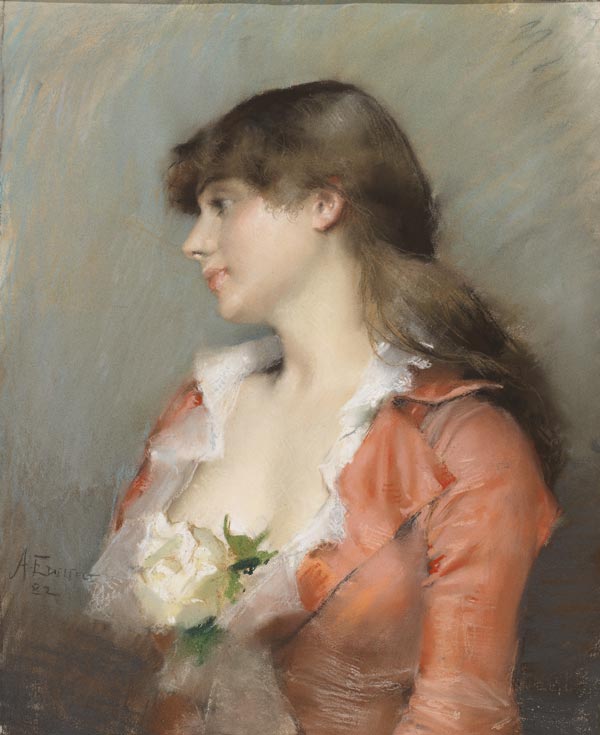
But Albert Edelfelt didn’t only paint young beauties. See this one:
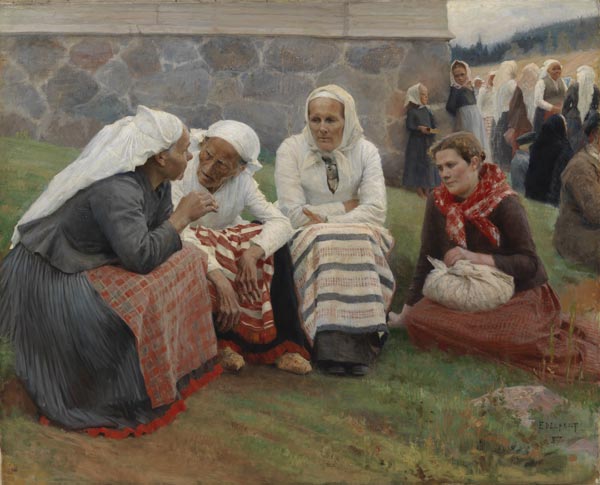
Browse more here: a big collection of Albert Edelfelt’s paintings
Last year, there was Albert Edelfelt’s big exhibition in France, and it’s now in Göteborg, Sweden, then later in May in Finland.
Villa Albert and The Haikko Area
Edelfelt’s studio is still up. It’s a small wooden cottage and a popular sight. Villa Albert is a new building in the same courtyard. It has a gallery space and a gift shop.
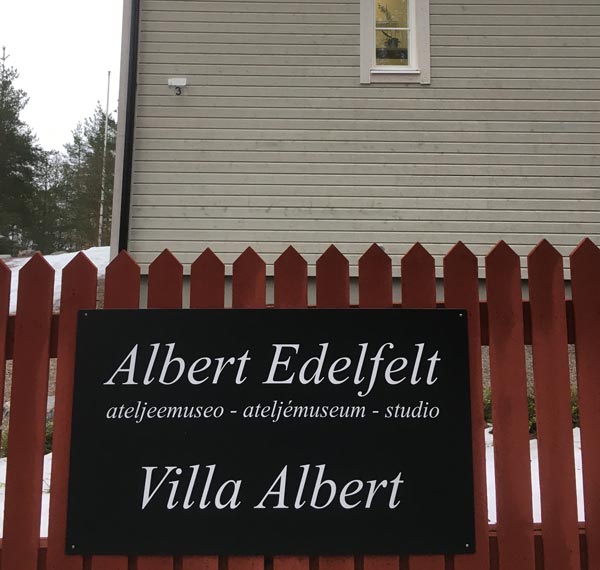

The Haikko area is beautiful. The sea is right there, and a beautiful manor hotel, Haikon kartano, is only a walk away.

This area is very different in summer, much more welcoming than in the picture that I took this week. Here’s Albert Edelfelt’s painting of his villa in Haikko, currently privately owned but still up and located near the studio.

It takes only 15 minutes to drive to an atmospheric old town Porvoo, which is also a very popular tourist attraction.
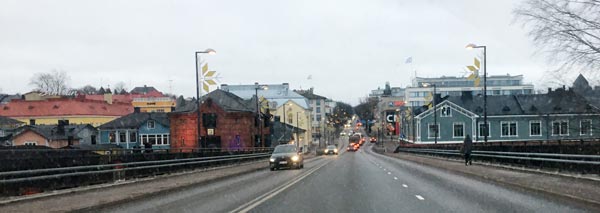
Artists in the Mood of Edelfelt
I will be painting a new series for the exhibition called “Taiteilijat Edelfeltin tunnelmissa” – Artists in the mood of Edelfelt. Even if Albert Edelfelt was a portrait painter, my intention is not to paint portraits but plants. I am excited to pick inspiration from his work, though!
The exhibition will have four other artists too: another painter Kristina Elo, photographers Maarit Lehto and Niclas Warius, and a sculptor, Kaj Lindgård. I am very happy to be displayed with these wonderful artists.
Aug 8 to Oct 10, Taiteilijat Edelfeltin tunnelmissa (Artists in the Mood of Edelfelt), Villa Albert, Haikkoo, Porvoo.
Coming Up in This Blog
This spring, you will see me painting for the exhibition, and I will also share some details of Albert Edelfelt’s life. Between those, I will be posting more playful posts – drawings and journal pages – so, as usual, art history, my oil paintings, and more illustrative work will alternate in this blog. I hope you find all this very inspiring.
3D Paper Collage of Hand-Drawn Art
This week, let’s play with hand-drawn paper pieces and create 3D collage art.
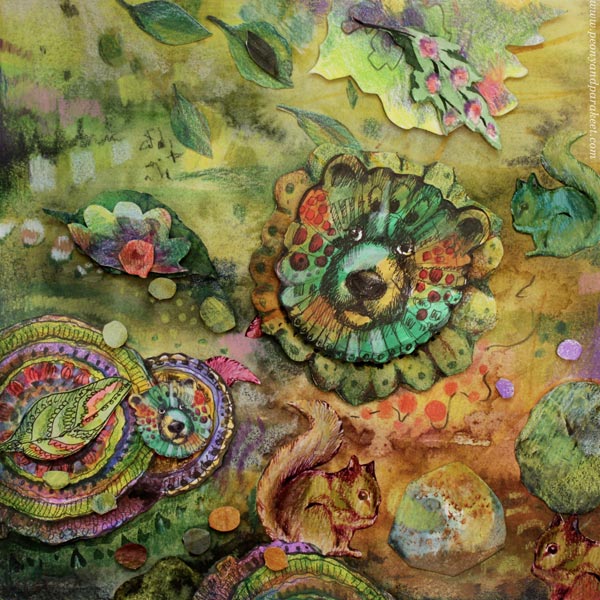
My example is eight by eight inches (about 20 x 20 cm), so fairly small, but it has quite a lot of details. I used foam tape to add dimension to it, and the result is lovely. It brings embroidery or applique to my mind.
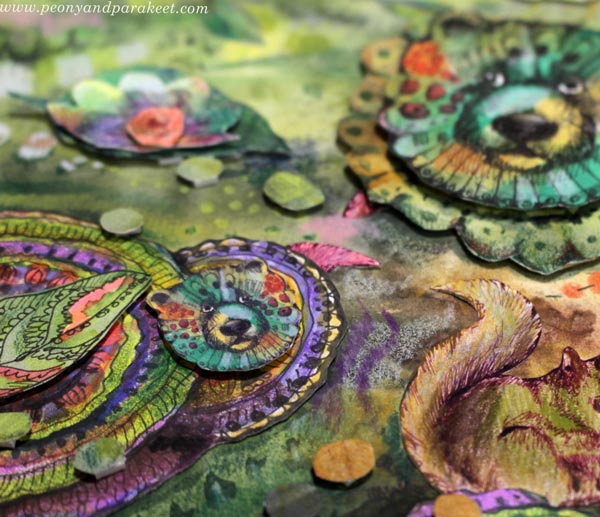
The idea of using foam tape between the layers is familiar to many from card-making, but I think the result is much more original when you use your own hand-drawn art.
Boxes of Joy – Shops Made by You for You
For years, I have been inspired by the idea of creating my own little paper shop. This shop is not about selling stuff for others but creative play where you are both a shop owner and its best customer. This picture is from 2016, when my shops were pretty simple and contained mostly paper sheets.
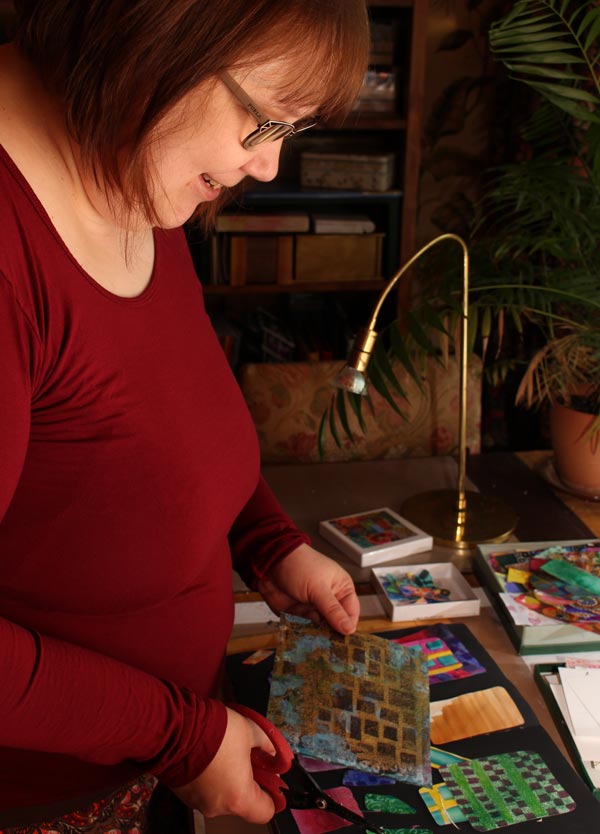
But the longer I have been in business, the more demanding my customer has got. I have got requests from myself to draw doodles, embroidery imitations, animals, magical stuff, flowers, dolls, and the little shops that I call boxes of joy have increased year by year and course by course.
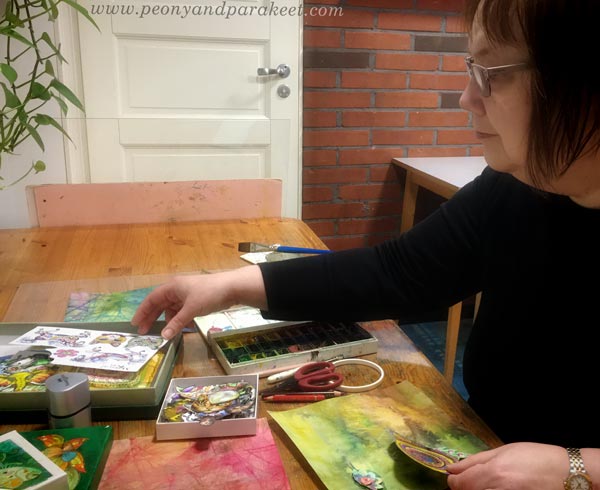
Sometimes the things I have drawn feel too precious to put to use. For example, the roses that I made for Doll World.

But the older the pieces get, the more I try to use them. And if something doesn’t “sell,” I can recolor it or add something to it so that I – my best customer – feel tempted to “buy” it.
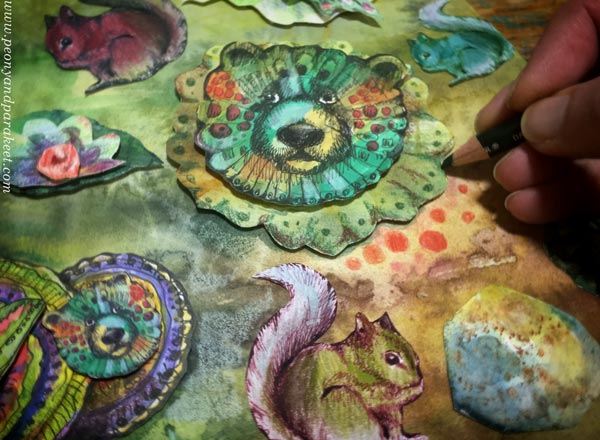
I like this process of adding more to something that’s pretty full already!
Thick Paper Love
One of my favorite papers is thick and smooth watercolor paper. It is suitable for both painting and drawing, but I sometimes avoid it because the collage gets so bulky. But for 3D effects, thick paper is perfect. It’s sturdy and goes very well with foam tape. Another paper that I like is Bristol paper. It’s not so thick but very smooth and sturdy enough for 3D.
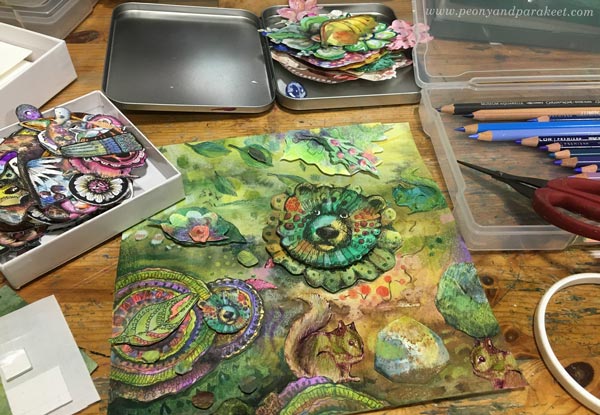
The background of this 3D paper collage is hand-painted watercolor paper. The elements are hand-drawn on watercolor paper or Bristol paper mostly.
Colored Pencils for 3D Paper Collage
Back in 2016, I used acrylic paints a lot. But nowadays, they feel less tempting. Not only because they are messier than colored pencils or watercolors but also because they are too similar to oil paints that I use for canvas paintings. I want to separate play from the pieces that I sell.
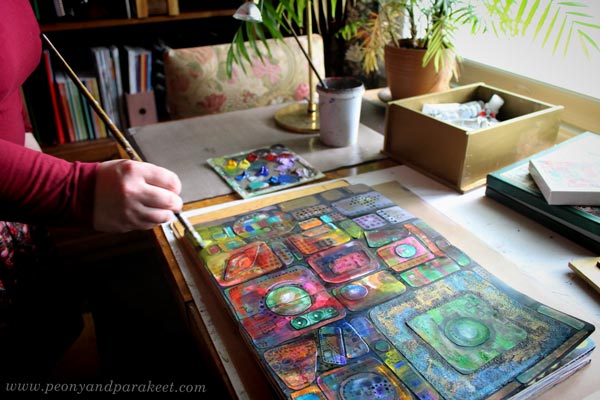
With play, I also want to grow my drawing skills. Colored pencils are great for that. They also go well together with watercolors. I have had a break with watercolors, but I hope to use them more this year.
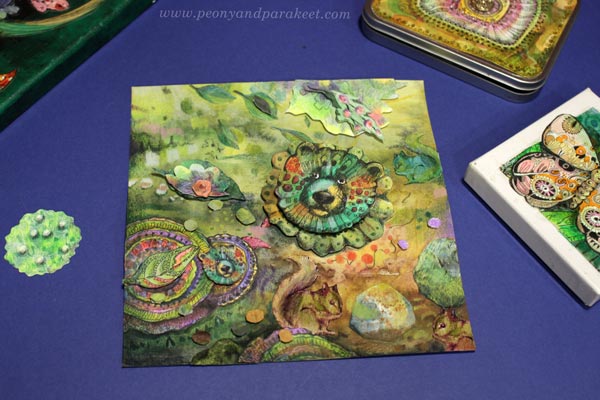
I like the many tones of green in this piece! I have colored many white parts with green to integrate the pieces better with the background.
Artist’s Life – Upcoming Projects
My playing time will get more limited soon because I will start a new series of oil paintings. I have been invited to a wonderful art history-related group exhibition that begins in August, and there is a smaller fantasy-related show in April. I will tell you more about these in the upcoming posts.
This spring is also full of art in other ways. I enjoy seeing all the lovely dolls from the participants of Doll World and other classes in my Bloom and Fly community. I hope to help you there as much as I can throughout the year. I am also participating in a Finnish artist coaching program to get to know the practices of the fine art world better. You have enabled my growth, and I hope that my growth will also benefit you. I hope that 2023 will be a good year of art for both of us.